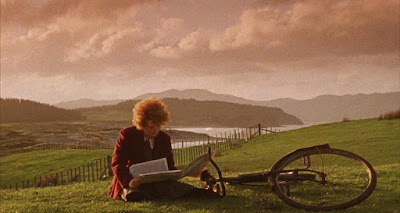Quest Status: 761 / 1000
TSPDT Rank #250
Oh boy. Let us begin with this quote from the Criterion Collection's official description of this film: "In 2 or 3 Things I Know About Her (2 ou 3 choses que je sais d’elle), Jean-Luc Godard beckons us ever closer, whispering in our ears as narrator. About what? Money, sex, fashion, the city, love, language, war: in a word, everything."
"Jean-Luc Godard beckons us ever closer, whispering in our ears as narrator. About what?"
You barely have to read between the lines to realize that even the person who wrote this copy was hard-pressed to know what Godard was talking about most of the time with this movie. I have to be honest - the more Godard films I see, the more I dread seeing the next one. After the first few I saw - Breathless, Band of Outsiders, Pierrot le Fou, Contempt (with some reservations) - everything thing else has felt stifled by varying degrees of pretension.
And in 2 or 3 Things I Know About Her, the pretension level is through the roof right from the start. Jean-Luc Godard whispers about the demoralizing effects of capitalism, two chain-smoking bourgeois Frenchmen drone on ironically about the Vietnam War, a mother (the mind-numbing Marina Vlady) has a deadpan conversation with her son in which both philosophically analyze their dreams without a hint of authenticity. The son (a kid of about 8 or 9) stares into the camera and drones on in a monotone about how he dreamed that two twins merged into one and that represented the reunification of North and South Vietnam. The mother's braindead veneer seems to be on the verge of showing emotion for a split-second... until Jean-Luc Godard's omniscient whisper chimes in with another comment about industrial society.
At this point, I started to feel that ripping my fingernails out one by one might be more pleasant than sitting through another 80 minutes of this nonsense. But about 30 minutes in, there were some extreme close-ups of a man stirring coffee, while Godard intoned pensively about the wide gulf between our subjective opinions of ourselves and the objective views of others. While looking into the deep dark black of the coffee and watching the bubbles form fascinating patterns on the surface, it all seems to make sense for a fleeting moment.





















































